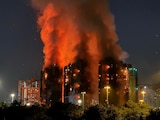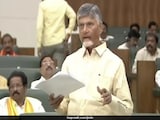'Cannot see anything, turning...' was the last message from the pilot of the 17-year-old helicopter that crashed near Kedarnath valley in June this year, killing all seven people onboard, and the valley exit was covered with clouds at the time of the accident, according to AAIB's interim probe report.
Aryan Aviation Pvt Ltd's Bell 407 helicopter (VT-BKA), which took off from Kedarnath helipad, crashed at 5.35 am and was destroyed in a fire before landing at the Guptkashi helipad on June 15. The accident happened near Gaurikund in Uttarakhand, and all the occupants -- pilot, five people and an infant -- lost their lives.
In the interim report, the Aircraft Accident Investigation Bureau (AAIB) said there was no abnormality when the helicopter took off from Kedarnath for Guptkashi.
The AAIB team, in coordination with the accredited representatives from the US and Canada regulators and technical advisors, is working on the future course of action to find the root cause of the accident.
The United States' National Transportation Safety Board (NTSB) and Canada's Transportation Safety Board (TSB) have appointed their accredited representatives and technical advisors for the investigation.
"On analysing the footage of the CCTV camera facing the valley entry/exit point, during the time of the accident, it was observed that the valley exit point was covered with clouds and was moving down into the valley. The other two helicopters, which were behind the accident helicopter VT-BKA, were observed to have exited the valley at a lower altitude by avoiding the clouds," AAIB's interim report said.
As per the procedures, the helicopters are supposed to maintain an altitude of 8,500 feet while entering the Kedarnath valley entry point and while returning, they are supposed to maintain an altitude of 9,000 feet while exiting the Kedarnath valley exit point.
"Accordingly, the pilot of VT-BKA was maintaining 9,000 feet altitude while approaching the valley exit point," the report said and added that no abnormality was observed while the helicopter took off and subsequently entered the valley as seen in the CCTV footage.
Providing details related to the helicopter's movement and messages from the pilot, AAIB said Aryan Aviation's operations team interacted with the pilot of another helicopter, VT-TBC, that had operated from Guptkashi.
"During the interaction, the pilot of VT-TBC informed the operations team that during the return leg, while en route to Guptkashi and when the helicopter VT-BKA reached near the valley exit point, the pilot of VT-BKA made a callout on RT that he could see clouds at the exit point.
"The pilot of VT-BKA subsequently called out “cannot see anything, turning…”. Thereafter, there was no RT call made by the pilot of VT-BKA, and there was no distress call made by the helicopter VT-BKA," the report said.
RT refers to Radio Telephony, which is used by pilots for communication purposes.
There is no MET facility available in the Kedarnath valley, but an Automated Weather Instrument (AWI) installed at the helipad provides live weather information and is connected to a computer.
While the weather information is not recorded by any means, the screenshot of this computer is shared periodically in the common WhatsApp group of the operators by one of the security personnel of UCADA (Uttarakhand Civil Aviation Development Authority).
"The instrument provides information about winds, visibility, temperature, pressure, humidity, dew point, etc., however, it does not provide any information about clouds," the report said.
Further, AAIB noted that the scrutiny of the WhatsApp group messages revealed that on the day of the accident, the weather information at the time of operating the first flight was not shared in the WhatsApp group.
"On enquiring about the same, it was informed that this information is usually provided later in the day," it added.
The report also said the technical advisor from Bell Helicopters visited Dehradun, and a visual examination of the recovered parts of the wreckage was carried out. "Most of the damages sustained by these parts were identified to be consequential in nature due to heavy impact with the terrain," it added.
Following the fatal accident, aviation regulator DGCA, in September, updated its circular to include various safety measures for Char Dham operations, including the Kedarnath shuttle flights.
(Except for the headline, this story has not been edited by NDTV staff and is published from a syndicated feed.)















